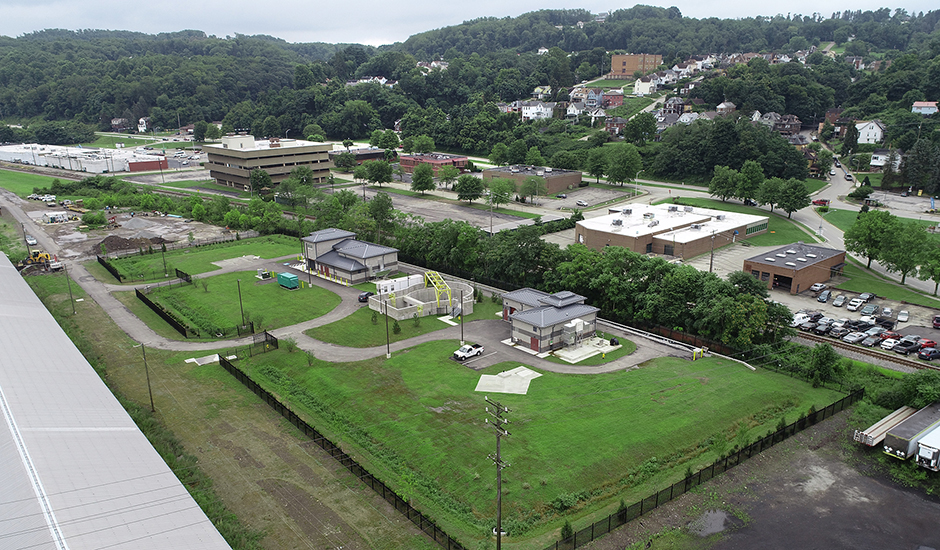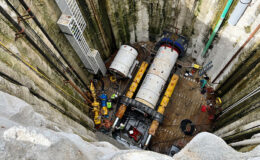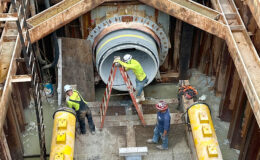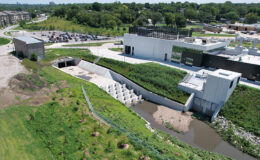Design is underway to implement the third and final phase of a 12-year, $50-million Combined Sewer Overflow (CSO) Long-Term Control Plan for the Mon Valley Sewage Authority in Donora, PA. The plan is intended to reduce overflow discharge to the Monongahela River by 110 MG per year to comply with the Authority’s National Pollutant Discharge Elimination System (NPDES) permit by 2022. Wade Trim is designing the final projects that will eliminate an additional 18 MG of CSO annually that include a 2-MG equalization (EQ) tank, 15-MGD pump station with a mechanical bar screen and emergency generator, and 1,200 lineal feet of 12- and 48-inch-diameter conveyance sewers.
The EQ tank replaces a CSO High Rate Treatment (HRT) facility specified in the original Plan to realize additional benefits. It is more cost-effective to construct an EQ tank of the proposed size versus an HRT that would capture the same volume of flow. In addition, the EQ tank will provide full biological treatment of combined sewage at the Authority’s main wastewater treatment plant, as opposed to only primary treatment at an HRT facility, before discharging to the river.
As Engineer of Record for the Authority since 2015, Wade Trim provided construction management and full-time observation services for Phase II projects that included sewer separation to eliminate 9 CSOs, rehabilitation of 22,000 feet of collection sewer, and construction of a 44-MGD CSO HRT facility across the Monongahela River from the WWTP. The HRT required challenging excavations near the river of 50 feet for a Vortex Separator and 30 feet for a screen and pump building. Difficult site conditions were mitigated by coordinating with four contractors to modify design of a CSO structure to accommodate multiple utilities and avoid local businesses and a railroad crossing. In addition, the overflow and effluent structures required live connections to a 100-year-old, 84-inch brick culvert that carried an active stream. Because the Monongahela River surcharges back up the brick culvert, the weather and river levels were continuously monitored to protect construction activities from flooding.







